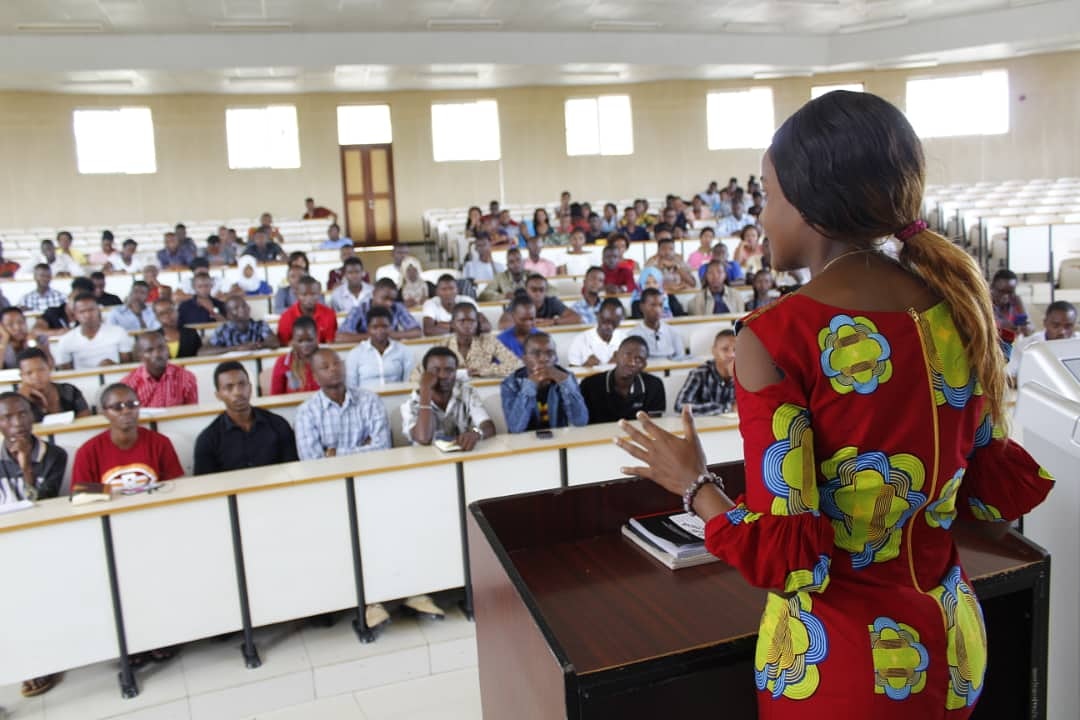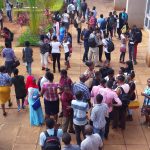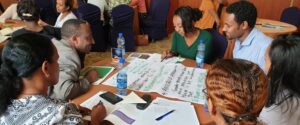
How do we address the higher education gender gap?
Gender-responsive pedagogy can play an important role in supporting higher-education institutions to produce students who go on to become gender-responsive professionals, leaders and citizens, and to play a critical role in addressing inequalities and building a more equitable future. Jennifer Chapin shares some thoughts for how this can be achieved from two new papers.
Young people have a vital role to play in development as change makers and future leaders in the public sector, in business, in NGOs and in communities. Universities are important sites to nurture their skills and to harness that energy for social change. But, for university education to fulfil that potential, it must be inclusive for all students. At the same time, women’s participation in higher education is a major concern in many regions of the world. While much attention is focused on enrolment, women’s ability to learn and progress in their studies, and their future employability, depend significantly on their classroom experiences.
In many countries, female students frequently identify teaching practices as a major impediment to their attendance and retention, especially in STEM courses, reporting that their achievements and abilities are routinely under-estimated by male teachers and fellow students. Some teaching staff may be unaware of their unconscious biases about male and female students, unintentionally discouraging female students from taking a leadership role within the classroom, or from progressing in what may be perceived as male subjects. A lack of focus on gender within teaching methods limits the understanding and identification of female students with course content, constraining their participation and interaction in class. Moreover, course content is often outdated, further reinforcing negative gender stereotypes. And it can be hard finding source material by and about women.
“It is really an uphill task to get good reference materials keeping a gender lens. Most of the very good up-to-date reference books for the courses I teach are authored by males so I get torn apart between ensuring quality while considering gender.”
Docus Alowo, Gulu University, Uganda
These experiences can be improved by taking a gender-responsive approach to the planning and facilitation of teaching and learning processes that address the needs of both male and female learners.
Withexisting research on gender-responsive pedagogy focused frequently on either Northern education systems or on primary and secondary education, we see an opportunity to start to address this gap by documenting our experience and approach.
As part of our work supporting higher education change in East Africa within the TESCEA partnership, we have spent the past three years supporting teaching staff in universities in Uganda and Tanzania to take an actively gender-responsive approach to how they teach and facilitate critical reflection for their students. As a result, these teaching staff have incorporated a new approach to gender-responsive pedagogy that weaves gender into all aspects of teaching: lecturing, lesson plans, assessment and mentoring.
“I have paid attention to the way I group my students. We have more males than females in the BSc IT course [but] I have made sure that in each group there is at least one female. I have avoided females sitting alone and away from their male counterparts and I have also been keen on equal participation of both genders in class.”
Eva Mirembe, Uganda Martyrs University
Co-developed and piloted with partners across the partnership (see below for partners), the framework and piloted model have generated important learning on enabling higher-edcuation teachers to lead work to improve inclusivity within their institutions, supporting them to make their practices, and their classrooms, gender-responsive, and encouraging them to acknowledge, and where appropriate, to challenge social norms and power imbalance.
We have shared our approach in a new paper and framework that discuss gender-responsive pedagogy and some ways that it can be supported.
This approach is based on a definition of gender-responsive pedagogy that acknowledges the significance of both learning needs and teaching practices as equally significant, but dual, aspects within gender-responsive pedagogy:
- The learning needs of male and female learners are addressed in teaching and learning processes (inside and outside of the classroom)
- Teaching staff are gender-aware and gender-responsive in their planning and facilitation of courses, and continuously reflecting and adapting.
This starting point means working with lecturers from the standpoint of their own awareness and skill-building on how to be more gender responsive in teaching and learning, what it means for their students, and how they can support their students to become more gender-aware members of society. By doing so they are improving the learning of all of their students.
“I witnessed a student teacher reorganising the sitting arrangement during school practice after he realised that girls were seated on one side and boys on the other. And to me, that is positive change in the way the students approach the issue of gender-responsive pedagogy.”
Agrace Atwikirize, Uganda Martyrs University
“My class had some learners who couldn’t easily interact with another gender. Both females and males had this kind of learners, however female were most affected. I made efforts to make them interact in discussion and leading of the discussions. The strategy showed improvement; the introspective learners become active and can interact with both genders.”
Edward Mwamkula, Mzumbe University, Tanzania
Progress so far has been encouraging. Faculty that had not previously considered gender within their teaching have now incorporated it into lesson plans and classroom management strategies. Students taking redesigned courses have noticed and appreciated the emphasis on gender awareness, with female students citing greater confidence and comfort in participating in classroom discussions. Gender-responsive pedagogy interventions have catalysed university teams in prioritising gender more widely, and supporting sustainable gender knowledge beyond the life of the project.
As we share learning and approaches developed through the TESCEA partnership we are also looking ahead to ways to use this learning to support other higher-education institutions in ensuring a more inclusive learning experience for all students.
If you would like to discuss more about INASP’s approach to gender-responsive pedagogy, please email me at jchapin@inasp.info.
***
Transforming Employability for Social Change in East Africa (TESCEA) is helping young people in Tanzania and Uganda to use their skills and ideas to tackle social and economic problems. With partners in Tanzania, Uganda and Kenya, TESCEA supports universities, industries, communities and government to work together to create an improved learning experience for students – both women and men. This improved learning experience fosters the development of critical thinking and problem-solving skills, and allows for practical learning beyond the classroom that improves a graduate’s employability.
The TESCEA partnership is led by INASP (UK), working with Mzumbe University (Tanzania), University of Dodoma (Tanzania), Gulu University (Uganda), Uganda Martyrs University (Uganda), Association for Faculty Enrichment in Learning and Teaching (Kenya) and Ashoka East Africa (Kenya).
TESCEA is funded by the UK’s Foreign, Commonwealth & Development Office (FCDO) as part of its SPHEIR (Strategic Partnerships for Higher Education Innovation and Reform) programme to support higher education transformation in focus countries in Sub-Saharan Africa, Asia and the Middle East.
To learn more about TESCEA, click here. To learn more about INASP’s Gender Responsive Pedagogy in Higher Education Framework, click here.

 Previous Post
Previous Post Next Post
Next Post


